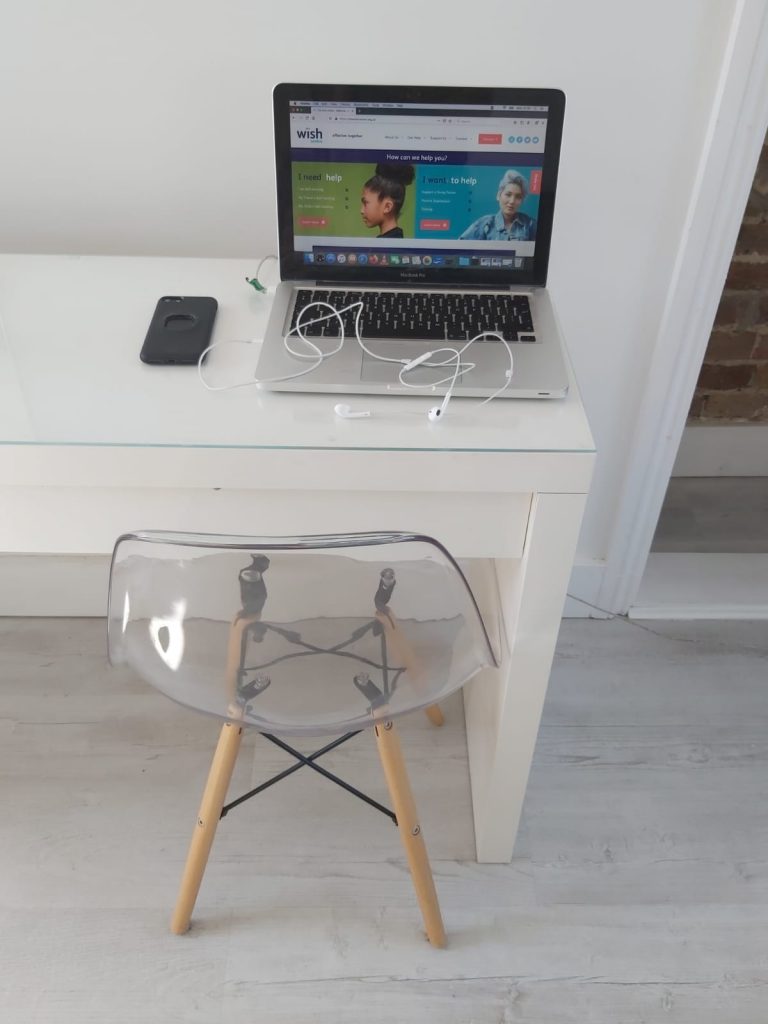– Written by Gary, Lead Psychotherapist

At wïsh we moved quickly to transfer our therapeutic services over to a digital service in order to ensure there was minimal disruption for the young people we support.
For those reading with less experience of working remotely there are some important considerations to think through that don’t always come into play when working face to face with someone in a secure setting such as a school or like we do at The wïsh Centre itself.
Over the next few days we will update this blog with some of these considerations for you to take a look at.
Location:

This is the first obvious change with some key considerations. Where will the young person you are supporting be located? During the Pandemic, young people are most likely to be at home, which can for many make things a bit simpler, but unfortunately for others home may not always be a safe place. We will look at safeguarding remotely in a later update.
Assuming that home is a safe place for the young person the considerations do not stop there as there are still many differences when compared to working face to face in a secure setting.
For example:
Are you or they likely to be overheard? Might someone come into the room they are using for the session unexpectedly?
Then there is the content of the room itself which can bring up additional considerations. What can be seen in the room behind the young person? Were they aware of this? Is it a distraction? Can I lead to them disclosing information they did not intend to?
Then of course the location of the Therapist is also very important. What can the client see behind you? What will you do if they ask about things they can see behind you? How can you ensure your own working environment is appropriate and safe, free from disturbances and distractions?
For some young people it is very natural for them to use technology to communicate with friends while in their private room, but a therapy session is different because it is both a personal and a professional conversation. So where, for example, a young person may converse with a friend while in bed, is that appropriate for when they are talking to their therapist?
It was important to think these things through before commencing sessions in order to ensure the sessions remain as secure and boundaried for our young people
This is not a full list and there will be additional considerations dependant on your situation and service but hopefully it is a useful starting point to get you thinking in this way.
Next up: Technology